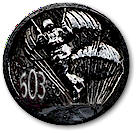|
16
February 1945 (Part 3)

|
 |
#25-1430: 2nd Bn,
relieved the 3rd Bn from their position. 3rd Bn extended perimeter forward
with little or no opposition and began to set up defenses for the nite. |
|
#26-1430: |
CP's of 2nd Bn, Reg CP,
S-4, S-3, S-2, S-1, 462 F.A., Engr. and liaison parties set up in the main
exchange and library building. Third floor and roof demolished.
Lots of office equipment. ? readily set up because of small perimeter. |
|
#27-1555: |
Message # 12 XI Corps-
situation report. |
|
#28-1600: |
Hospital set up on first
floor of C.P. Building. Reg Hq Co & Serv Co. set up in building making
conditions very easy. Casualties light. |
|
#29-1930: |
Situation report- Msg #13
to G-3 XI Corps. |
|
#30-2400: |
Situation report- Msg #14
to XI Corps- no change. |
|
#31 |
Movement confined at
darkness and any movement to be considered enemy. Our troops kept up harassing fire thru
the nite and little sniper fire returned.
|
|
|
|

Richard Lampman |
"McCarter
wasn't the only wide awake trooper Calhoun had in his command. There was
an incident that happened with that bomb crater, part of our first encounters. I haven't heard
anyone mention this before, it's about time to do so.
The first engagement the afternoon of the day we
jumped, was
the one crater in the Battery B
(Boston) area where Mike Natalie saved our hides!! We didn't have many
grenades so we had to hold until some of the men went and got some. After
we had lobbed a few into this hole we went down into it to check things out. Todd, Natalie, I, and two
or three others went in. We were really checking to make sure the Japs were all dead.
It was filled with lumber. We walked by a Jap everyone thought was dead -
except Mike Natalie!! He brought it to our attention and shot the Jap who,
due to surprise or whatever, sat straight up when Mike shot him. He was
faking!! It is obvious we weren't being very careful. It had been my most
memorable memory all these years."
|
|
|
|
|
|

|
|
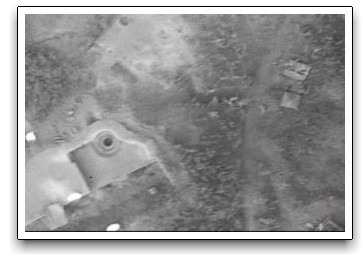 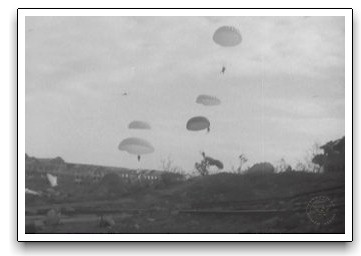
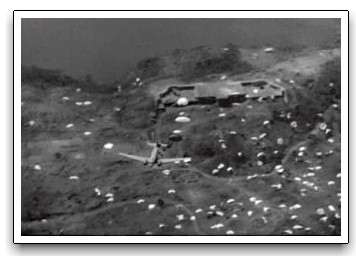 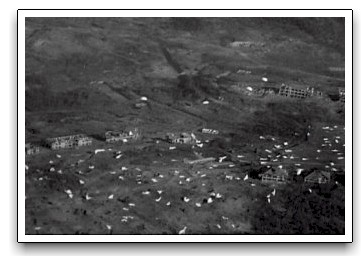
Early
after the landing, Richard Lampman and others laid their hands on some rum, Bacardi Rum no less.
He
was wounded on Negros,
came close to losing an arm, and was sent home. He never heard for about
43 years that Mike Natalie
was killed in a jeep accident near Pulapandan, Negros shortly after the war.


 |
HHQ Co JOURNAL
Some of us ate K
rations - the boys in the 3rd L.M.G. Platoon barbecued a chicken. At 1930 it
was dark - blackout, no lights, no fires. Our dispositions at the time was -
Co. C.P. set up in the barracks. We found a lot of T-shirts, bed spreads,
towels etc. which we used for sleeping - sleeping no one got much sleep. There
was sporadic firing going on all night - on all sides.
The company had taken
up positions in and around Topside Barracks. The three machine gun
platoons remained with their parent company the first day and night. Ordinarily they were attacked to the rifle companies, one platoon of
two sections with two guns per section, was attached to each company.
During the first day and night D company was
assigned the mission of defending B Field. Their west flank tied in with the
3rd platoon of F company at the point where the street running north-south
passes through the Senior Officers Row. Their perimeter generally followed the
500 foot contour line until east of Corregidor Light House where they tied in with the perimeter of the 3rd
Battalion.
There was not much action in their sector the first day and night. Two men
were listed
as missing after the jump. These were Pfc Frank B. Keller and Pfc
Calvin C. Martin.
|
|
|
|

Charles Bradford MD |
"Part of Lt.
Charles K. Preston's 2d
platoon, D Co., were unlucky enough to be blown
into
Crockett Ravine below
Battery Crockett,
together with lost individuals and even squads from other units. They were
gathering together to climb up to the jump-field when they found Pfc. Calvin
C. Martin,
tangled beneath a tree, with his ankle injured.
"This is one hell of a place to break a leg, Lieutenant," the private said,
"but I guess I've done it. I'll hide out down here, but when there's time will
you send some men back to get me?" There was no choice, since the platoon could
not linger here at this stage of the operation, nor could they possibly have
carried the trooper with them. His prospects were grim. "Take these extra clips
of ammo in case you need 'em, son," the Lieutenant said. "We'll send a platoon
down by nightfall."
Just then Keller came on the group. He had strayed up from further down the
ravine where he had landed quite alone. "I'm just a rifleman, Lieutenant," he
said, "they can spare me from my squad, so let me stay with Martin here. I
can help him if things get tough." It was a brave offer, and one which the
Lieutenant welcomed, for he knew how helpless a wounded man would be if the Japs
ever found him--not killing; at least not at first--but torture and then death.
Preston left them, promising to send a rescue squad as soon as possible.
An hour later Keller spotted a Jap sniper crawling through the underbrush, then
a second, and then a third following him. It would have been easy to have picked
them off, but that would have brought more to the spot, and he and Martin
were hopelessly trapped. So he held his fire and waited motionless for fifteen
minutes or more while the Japs scouted through the area. The Yanks had provided
themselves with good concealment. One Jap came within fifteen yards of them
without suspecting their presence. Then the three beat off through the bushes up
the slope, while two more who had appeared combed an area opposite them with
even greater thoroughness. At last they all withdrew.
"Let's crawl down toward the sea, " Keller whispered. "I'm afraid those Nips
will come back before dark." Heavy machine gun fire over their heads helped
cover the sound of their movements as the two fugitives slid from bush to bush.
At last they reached a hollow, over which a tree had fallen. Keller poked his
head cautiously out of this depression and found himself staring directly down
upon the back of a Jap sniper's head, almost close enough to touch. Nearby lay a
small sack of rice and some gas masks, which other Jap soldiers had evidently
discarded. Apparently this was their rendezvous. Keller withdrew swiftly and
motioned Martin to burrow down as best he could under the log. As they waited they
were discouraged by the sound of more voices. It was growing toward dusk, and
they realized that the Jap squad would probably bivouac beside their hiding
place.
"Any move might give us away," he explained in telling of the experience, "so we
had to lay awake all night for fear of rolling over or talking in our sleep.
Martin
couldn't sleep no ways for the pain, and if he caught me dozing off he'd dig a
finger into my back. One of the Japs snored pretty loud, but we wasn't
complaining about that. When he quit snoring was when we allus got to worrying."
Shortly before dawn the Japs stirred. One of them tripped over a branch and
almost tumbled head first into the Yankee's hiding place. But he recovered in
time and went off harmlessly, leaving Keller and Martin safe for the time being.
Heavy firing was in progress over their heads, indicating that combat along the
ravine's edge would prevent aid from reaching them for some time. "You better
get out of here," said Martin, "I'll be all right if I lay low, and you could make it
down to the beach where some boat might pick you up." Keller had no such idea.
"
I'll scout around and see if we couldn't both make it to the beach," he said.
But reconnaissance showed this would be too hazardous. "Long about the
afternoon," Keller reported, "things maybe quiet down so we can slip out. Let's
open up another ration." They did so, washing down a few dry biscuits and some
canned eggs-and-ham with what was left of their third canteen of water. The last
canteen they kept in reserve, though each of them yearned for a few more
swallows to quench his thirst. Nothing happened during the day. They slept a
little, waked and slept again. The sound of the fire slackened at intervals but
was often renewed, until in the late afternoon it seemed to move off toward the
western summit. "Guess they'll come down for us tomorrow," Keller remarked.
Meanwhile, Lt. Preston had succeeded in reaching the assembly point, but his men
were needed urgently on the perimeter so that none could be spared to return
with a rescue party. "We'll get 'em in the morning," the Company Commander had
decided, but when morning came patrols were required to drive the remaining Japs
from the western rim. This work lasted all day. Toward nightfall Preston again
pleaded for a chance to bring the injured sergeant back, and it was agreed that
he should have three squads for the following day. His anxiety mounted through
the night, but there was nothing he could do except worry �which is worse than
nothing.
With the first streaks of dawn he gathered his men and cautiously led them back
down the defile. The Japs had withdrawn from the area, and after two hours
searching he reached Pfc. Martin. Keller had scouted off to look for a safe path
down to the sea, but he soon returned. "Thank God you're all right!" said
Preston, "I kept thinking the Japs would capture you."
"They might 'ov," Keller replied dryly, "but they'd 'ov been dead." For hours
both Keller and Martin held grenades in their hands, with the pins loosened, in case
Japs should fall on them."
|
|
|
|

John Lindgren |
"When we were at the airstrip at Mindoro the pilot for my planeload talked to
us, "A lot of the men are dropping in the ravine because the are going too
soon," he told us. The magic number now was seven seconds after crossing
Beltline Road. If you counted "one thousand", two thousand", all the way to
"seven thousand" you stood a good chance to land in the right place. I was the
first man out and landed no more the than 25 or 30 yards from Beltline Road as
did S/Sgt Wenditz and Sgt Gouvin who had the other two sticks. The ranking man
is jumpmaster and goes first in his stick or he can go last if he prefers, but
he in either case does the counting. All of the D company's jumpmasters led
their sticks. Frank Keller was awarded the Silver Star at a ceremony on
Corregidor for remaining with Drew."
|
|
|
|

Fitzhugh Millican |
"Petzelt had
developed a knee mortar like mortar, which could fire on a flat
trajectory. I don't think 'E'
Company brought it
along to Corregidor." |
|
|
|
|
|

|
|
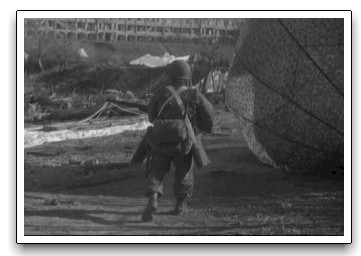 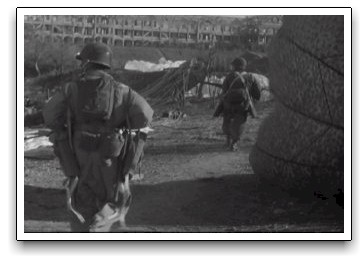
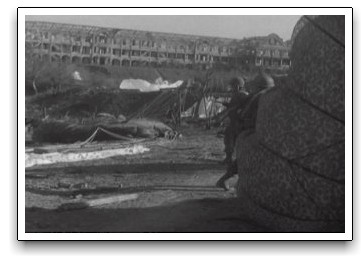 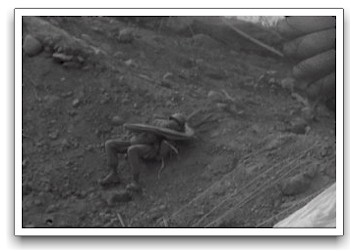
F Company did bring
their flat trajectory mortar and others did. There is a Signal Corps photo
displayed in "The Return to Corregidor" showing a flat trajectory knee mortar
being fired into a cave. As far as can be determined, it is not known if all
companies carried one of these type mortars or whether it was up to the
individual companies. 1st Lt. John Lindgren was the mortar platoon leader in
D company, and he does not remember carrying in a flat trajectory mortar.
In reading John Sanguinette's account below, remember that E Company did lose a
mortar.

|
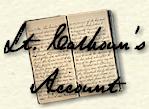 ""We moved
over to Senior Officer's Row and stopped for a few minutes in the street in
front of the house. There were still enough large trees here to make the
street shady in spots. The street was paved with concrete and lined with concrete
curb and guttering. Concrete walks led up to each house. One could easily see
what a well kept street this had been. I had the sad thought that these
battered buildings had once been home for families with all their, joys
and hopes, and problems. They never dreamed that these once fine homes,
property of the US Army, would be reduced to ruins so quickly, nor for that
matter did the people of the United States.
""We moved
over to Senior Officer's Row and stopped for a few minutes in the street in
front of the house. There were still enough large trees here to make the
street shady in spots. The street was paved with concrete and lined with concrete
curb and guttering. Concrete walks led up to each house. One could easily see
what a well kept street this had been. I had the sad thought that these
battered buildings had once been home for families with all their, joys
and hopes, and problems. They never dreamed that these once fine homes,
property of the US Army, would be reduced to ruins so quickly, nor for that
matter did the people of the United States.
1400
hour The Company moved on down to the vicinity of the last house, 28-D.
I walked out to Wheeler Battery. Just before I made the turn bringing me
behind the battery I saw a dead officer tagged with an Emergency Medical Tag.
It was filled out. Under injury "gunshot wound" was entered. Under
prognosis the entry entered was "death." This was Captain Emmet Spicer, a
doctor in the 462nd Prcht FA who had made out his own EMT before he died.
1st Lt L. S. Browne, our Bn S-3, came walking around the bend of the berm from
Battery Wheeler. I walked around the bend toward the battery, took a brief look
and returned to 28-D. Bailey gave me orders to take two squads, clean out the
AA gun positions east of Battery Wheeler, and search Battery Wheeler. Browne
had told me that he had been through the battery and it was empty."
|
|
|
|
|
|

|
|
What Browne didn't
know, couldn't know, because the maps which were issued were entirely inadequate
to the task, was
that the Japanese could move in and out of Battery Wheeler freely, without being
observed. At this time, there were no paratroops around the northwest end of Battery Wheeler, and Wheeler Tunnel was to the west of the battery's northwest end, and
a good size force of Japs were in the tunnel. One of the former Japanese prisoners
some decades later stated that the tunnel was their headquarters.
Once in the battery the Japanese could move freely through the ground floor
magazines, completely concealed from outside observation.
Over the years,
there has been much speculation about a direct tunnel between Wheeler Tunnel
and Battery Wheeler, though nothing definitive has ever been proven.
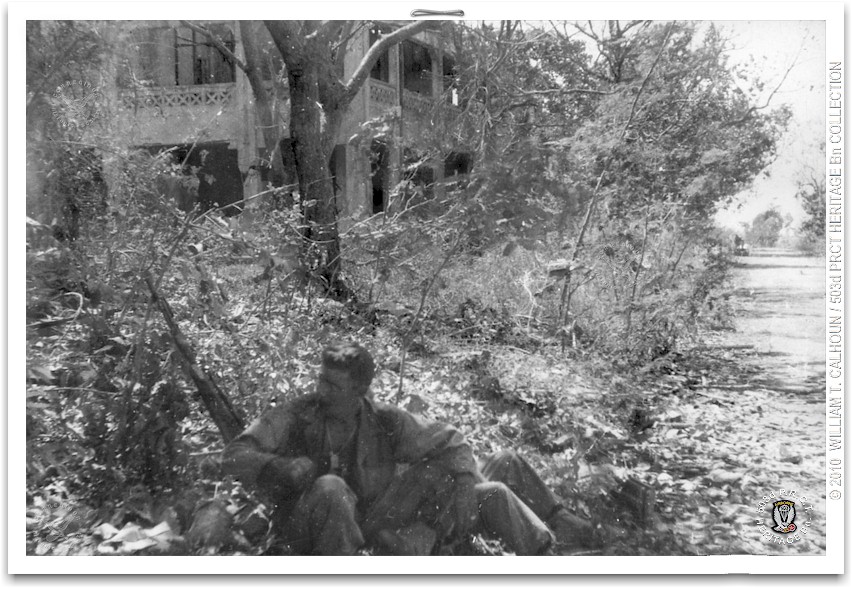
Handlon is pictured here with Bill Friehoff awaiting
orders. They would walk down the lane (pictured)
and within fifteen minutes, Handlon would be dead.

|
 "Brown repeated
the 'empty' advice to Bailey. I only had four men in my 1st squad so I took the entire
platoon. The area to be cleaned out was in plain view from upstairs of 28-D.
We pushed out under fire from the AA area and started to work on them. We used
bazookas and our flat trajectory 6Omm mortar under squad leader Pfc Henry McCory. This kept them down and we advanced,
either killing them or driving
them back. Pfc. Richard Lampman killed about seven in one crater alone by
advancing firing his BAR from the hip. Pvt. Lloyd G. McCarter,
showing his usual aggressiveness, killed several. The men worked smoothly and efficiently,
like a practiced football team. During
the advance our right flank was exposed to the high south parapet of Battery
Wheeler, so I sent Sgt. William Freiholf with the rest of the 1st squad, -Pfc.
Glen Handlon,
Pfc Albert Thomas, and Pfc Delby Huff, to go over and occupy
Battery Wheeler's south parapet. Freiholf took his men to the road in back of
the battery." "Brown repeated
the 'empty' advice to Bailey. I only had four men in my 1st squad so I took the entire
platoon. The area to be cleaned out was in plain view from upstairs of 28-D.
We pushed out under fire from the AA area and started to work on them. We used
bazookas and our flat trajectory 6Omm mortar under squad leader Pfc Henry McCory. This kept them down and we advanced,
either killing them or driving
them back. Pfc. Richard Lampman killed about seven in one crater alone by
advancing firing his BAR from the hip. Pvt. Lloyd G. McCarter,
showing his usual aggressiveness, killed several. The men worked smoothly and efficiently,
like a practiced football team. During
the advance our right flank was exposed to the high south parapet of Battery
Wheeler, so I sent Sgt. William Freiholf with the rest of the 1st squad, -Pfc.
Glen Handlon,
Pfc Albert Thomas, and Pfc Delby Huff, to go over and occupy
Battery Wheeler's south parapet. Freiholf took his men to the road in back of
the battery." |
|
|
|

William Friehoff |
"As you
say,
Capt. Browne said "no nips in Wheeler".
So Thomas, Huff, Handlon, and me went
on a patrol. Needless to say Browne was wrong. Our accounts and words my way
of saying it may be different so here goes with a diagram."
|
|
|
DIAGRAM UNDER
CONSTRUCTION
|
|
|
"Thomas
stayed where he was after Handlon was hit. Huff and I made it to the ammo and
powder doors behind and under the stairs. We engaged the MG in the tower with
BAR and rifle grenades to no avail. Thomas was told to notify command. Well, how
we were allowed to get out was not my thought of the day, just the loss of two
good people." |
|
|
|
|
|

|
|
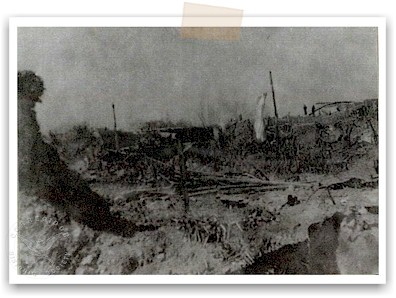

|
 "Thomas
came straight out to us and reported the situation to me. It was impossible to
go directly from our position and up on the south parapet. There was a very deep
gully running near the south parapet all the way to where the parapet ended.
One had to circle the end of the parapet and follow the road and railroad
leading to the battery around the bend of the berm, and along the back of the
battery. Thomas had been far enough back so that he was protected
from the Jap 50 cal. MG by the berm "Thomas
came straight out to us and reported the situation to me. It was impossible to
go directly from our position and up on the south parapet. There was a very deep
gully running near the south parapet all the way to where the parapet ended.
One had to circle the end of the parapet and follow the road and railroad
leading to the battery around the bend of the berm, and along the back of the
battery. Thomas had been far enough back so that he was protected
from the Jap 50 cal. MG by the berm
It was now
late afternoon. I pulled everyone out of the area around the AA guns, and we
worked our way up the small wooded hill facing the rear of Battery Wheeler.
Several of us crawled forward across swag
and into a crater located on the berm
opposite the BC Station (tower and offices in Freiholf's diagram). We brought a
bazooka team into the crater to fire at the Japanese MG. Several rounds were
fired, but they had no effect on the thick concrete. S/Sgt John R. Phillips and
S/Sgt Chris Johnson, with some of Johnson's 3rd squad, moved up closer. Thomas and
T/Sgt Phillip Todd were looking over the edge of the crater, then splat and
Thomas's head seemed to melt. He turned around and fell face down into the
bottom of the crater. We knew he was dead. That hurt.
It also puzzled us as to
how the Jap rifleman saw him from Battery Wheeler. It was now almost completely
dark. This mystery was soon cleared up. A Japanese officer and Japanese soldier with a
rifle were found and killed in a foxhole behind us. The situation with Freiholf
and Huff was critical. Nothing was working. I went back to 28-D, the company
CP to get a flame thrower. As I went off the berm into the road a .50 cal. MG
opened fire and all I could see was tracers. I accelerated to maximum speed and got
to a safe place. I sat down to blow. Almost immediately a knee mortar round
dropped very near me, I thought between my legs. This turned me over on my back
and jarred the heck out of me, but I was not hurt. I took off for 28-D and
nearby one of our men raised up out of a revetment with a Thompson submachine gun
and challenged me. I was so winded I could not answer. Thank goodness he did
not shoot.
I got back
to the CP without further incident and told Bill Bailey the situation and said
we needed a flame thrower. He must have already anticipated the need because a
flame thrower was there shortly. Bill Bailey, the flame thrower operator, and I
started back. I took them to the wooded hill and avoided the road to Battery
Wheeler.
This was a more difficult, but
safer route. We crossed the swag and crawled into the crater. The crater was
within flamethrower range of the battery. We had the ultimate weapon. We'd get
them now. The flamethrower operator moved up near the edge of the crater and
readied his weapon. Much to our dismay nothing happened when the weapon was
activated. Evidently the equipment had been damaged in the drop, and it would
not function.
Everything was going wrong, but it
was not over yet. It was only much later that we realized how fortunate
that we probably were. With all the black powder stored in the powder
rooms of the battery, the big blow which took place the following night might
well have happened with us in position to be incinerated.
Pfc Earl Soucie had a white phosphorus rifle grenade. This
could be fired between the Jap machine gun and the room in which Freihoff and
Huff were trapped. The great cloud of white smoke would provide cover for
their escape. He fired the grenade, we waited with bated breath -- nothing
happened. In the rush the arming pin had not been pulled. McCarter and
S/Sgt
John R. Phillips crawled up closer to the tower of the battery
command station. In fact they were at the base of the berm. It was now very
dark. They threw all their hand grenades and fired up all their ammunition. They
found a carbine by the body of a dead trooper which lay on the slope of the
berm. Soon they fired up all the carbine ammunition. Then they started
throwing rocks and yelling all the more at the Japs. During all the commotion
Huff and Freihoff ran out and got back to us. I could have kissed them. Now we
had to extract our snookered pair, which turned out to be a threesome. Chris
Johnson had joined in the festivities. This was done by yelling at them to get
back with us. Bailey had me move the platoon back to the west side of 28-D and
set up a defensive perimeter for the night. I think the audacity and ferocity
of our inebriated threesome had stunned the Japs. In any event their action got
Freihoff and Huff out alive, and we were thankful.
The night was interrupted by
occasional probing attacks by one or two Japs at one time. They all seemed to
be armed with spears. These were long poles with a bayonet or knife tied on the
end or a one inch steel rod which had been sharpened on one end. Many of the
sailors who had been picked up from sinking ships and sent out to Corregidor did
not have rifles and were armed with spears. A couple of the men in the company
received slight wounds, but the only serious damage was to our nerves. One man close
to me was awakened by a Jap probing him in the side with a spear. He grabbed
the spear and killed the Jap with his trench knife. Those of us near him could
not help him because we could not see who was who as they rolled on the ground.
This was not considered serious business because most of the 850 Japs must be
dead by now."
|
|
|
|
|
|

|
|
In his Advanced Infantry Officers
course monograph, which is recounted in LTG E.M. Flanagan's book, "Corregidor,
the Rock Force Assault," Hudson Hill tells of commanding a composite force
composed of E and F Company men after the jump. This was puzzling because
"F"
Company jumped on B Field; however, Ed's account clarifies it. Hill, along with
a number of "E" Company men, had landed short of A Field in the NCO Quarters-Cheney
Ravine area. Evidently, being the senior officer present, Hill assumed that he
was in command even though he was in Flash's assigned position. Flash was not
aware of this, and Hill was soon moved out to his assigned sector by Col. Jones,
leaving the rescue operation to Flash.


Ed
Flash |
"About 1600 hrs. we started receiving
Jap fire - rifle fire as I was in the process of placing men approximately 5
paces apart to establish the platoon sector of the airhead for the night.
Concurrently we helped each other attempting to recover the dead troopers and
equipment bundles while under constant Jap small arms fire which increased as
the night approached. We were unable to move to the bodies - every effort
drew lots of fire from the Japs and suddenly Japs started to expose themselves
all in front of the 2nd platoon sector, caves, railroad tracks, and warehouses.
As the night approached I decided to
move back into the concrete buildings as they could encircle our rear in our
present position. We split into pairs in the many rooms looking out windows
and doors to our front. I specifically told all my troops - no firing after dark
unless the Japs come in the buildings. They were moving around the tracks but
didn't come up. I could hear walking in the rear of the building and assumed it
was Japs leaving Topside under cover of darkness. They were no strangers to
this area. I forgot to mention, we found plenty of fresh food and cooking areas in the
buildings, bags of rice, soy sauce in wooden buckets, and cooking and eating
utensils, clothing, and towels. What proved to be, later the next day �WE WERE
IN A HORNETS NEST. We moved into their area before they could come back out of
Cheney Ravine/Wheeler Point area to our buildings.
Anyway,
around 2400 hrs., 16 Feb., dark night, a tall well garbed Jap stood in my, in my
doorway about to come in - my sergeant with me fired and wounded the Jap. He left
the porch, we stayed put. Thank God our troops had fire discipline - no one panicked
and fired. All we needed was to have a bunch of Japs lob hand grenades into each
room and we would have taken a lot of casualties. We were strangers to the area,
they weren't. We heard the wounded Jap moan for about 2 hours and then cease.
The
company CP was established at Building 28-D which is the most western house of
the Senior Officer's Row. Generally the F Company situation the first night was
that the 1st platoon was on the west side of 28-D and extending west facing
Crockett Ravine to the south and Battery Boston (the old AA positions) and Battery
Wheeler to the southwest. There was a gap of some 300-400 yards between them and
the 2nd platoon which was to the west defending the NCO Quarters- Buildings #52,
#53 and #68. The 3rd platoon extended east along senior Officers Row facing
Crockett Ravine and tying in with D company who held a perimeter around B
Field. A BAR team with John Sanguinetti, gunner, set up on Belt Line road was
the connecting link. The 3rd platoon extended to about Building #23."
|
|
|
|
 "In answer
to Richard's question about who jumpmastered his stick, I do not know for sure.
The platoon headquarters, three men and probably our attached
medic (Jensurd), and Chris Johnson's 3rd squad were with me in our aircraft. Johnson's squad
only had nine men, because Binion Harrison turned up with a badly burned arm
that morning and did not jump. This totals fourteen men. The other ten men were
more than likely the 2nd squad. I know six 1st squad men were in Bill Bailey's
plane, because they were with 1st Sgt Baldwin as shown in the much shown Signal
Corps photos. I expect the other four men of this squad jumped in the stick ahead
of Baldwin's. If you take about fourteen in company headquarters, that leaves
ten places for the rifle squad. 1st Lt. Willam Lavanchure (company executive
officer) had jumped that morning with the 3rd Battalion "In answer
to Richard's question about who jumpmastered his stick, I do not know for sure.
The platoon headquarters, three men and probably our attached
medic (Jensurd), and Chris Johnson's 3rd squad were with me in our aircraft. Johnson's squad
only had nine men, because Binion Harrison turned up with a badly burned arm
that morning and did not jump. This totals fourteen men. The other ten men were
more than likely the 2nd squad. I know six 1st squad men were in Bill Bailey's
plane, because they were with 1st Sgt Baldwin as shown in the much shown Signal
Corps photos. I expect the other four men of this squad jumped in the stick ahead
of Baldwin's. If you take about fourteen in company headquarters, that leaves
ten places for the rifle squad. 1st Lt. Willam Lavanchure (company executive
officer) had jumped that morning with the 3rd Battalion
The
D and E Company execs also jumped
that morning with the 3rd Battalion. I believe I had my 2nd and 3rd squads with me. I stated
that company headquarters had fourteen men and then
stated that Red Lavanchure
was not there. An Army
photographer named Yekanik, took his place."
|
|
|
|

Richard Lampman |
"Early
after the landing, some of us laid our hands on some rum - Bacardi Rum, no less. I
didn't even try to sell any of the drink I had!! There was one of our 75 gun
crews who I thought the most unlucky group on the island. They had to scrounge
parts from 3 other guns in order to have one that would work. They kept taking
it apart and setting itup then taking it apart and moving again. I
remember laughing at them about 'wearing the gun out taking it apart so much.'
They didn't beat 'H' out of me so when I got the spirits, I gave them four
bottles to help soothe their nerves. I got mouth for giving it away.
A group of Hard Luck 'D' Co got a few bottles, too."
|
|
|
|
 |
"The 75mm crew sounds like the one from Captain Henry W. "Hoot" Gibson's
B Battery who were with us at 28-D. They disassembled their gun,
reassembled it on the second story porch of 28-D, and then had to take
it apart again to set it up on the ground. They lost a crew
member, John Prettyman, on the porch." |
|
|
|
|
|
 |
|
As the sun of 16 February went
down, E Company's perimeter included the west end of the Topside barracks
and the Corregidor Hospital. They were tied in at their east end with the 3rd
Battalion whose area extended on around the
eastern edge of Topside to tie in with D Company east of the Corregidor Light
House
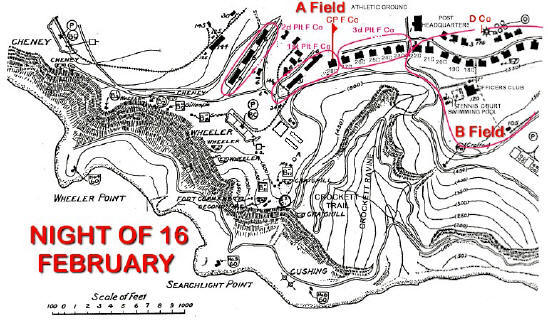 . .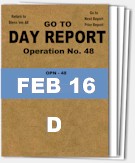
So
ended the 2nd Battalion's first day on Corregidor. A perimeter was
established around
the
western part of Topside. 'E' Company and 2nd Battalion Headquarters Company
are defending Topside Barracks, the north side; 'F' company is defending the west and a part
of the south side; 'D' company is defending the remainder of the south side.
'F'
Company's sector, particular the second platoon's perimeter at the NCO quarters,
is the hottest part of the battalion perimeter. Strangely, no light machine gun
platoon had been assigned to 'F' Company. These platoons had been retained
for the north side defense. Omissions such as this are known as foul ups,
though there is a more earthy word now used. Luckily no organized Japanese action was offered
during this night.
|
